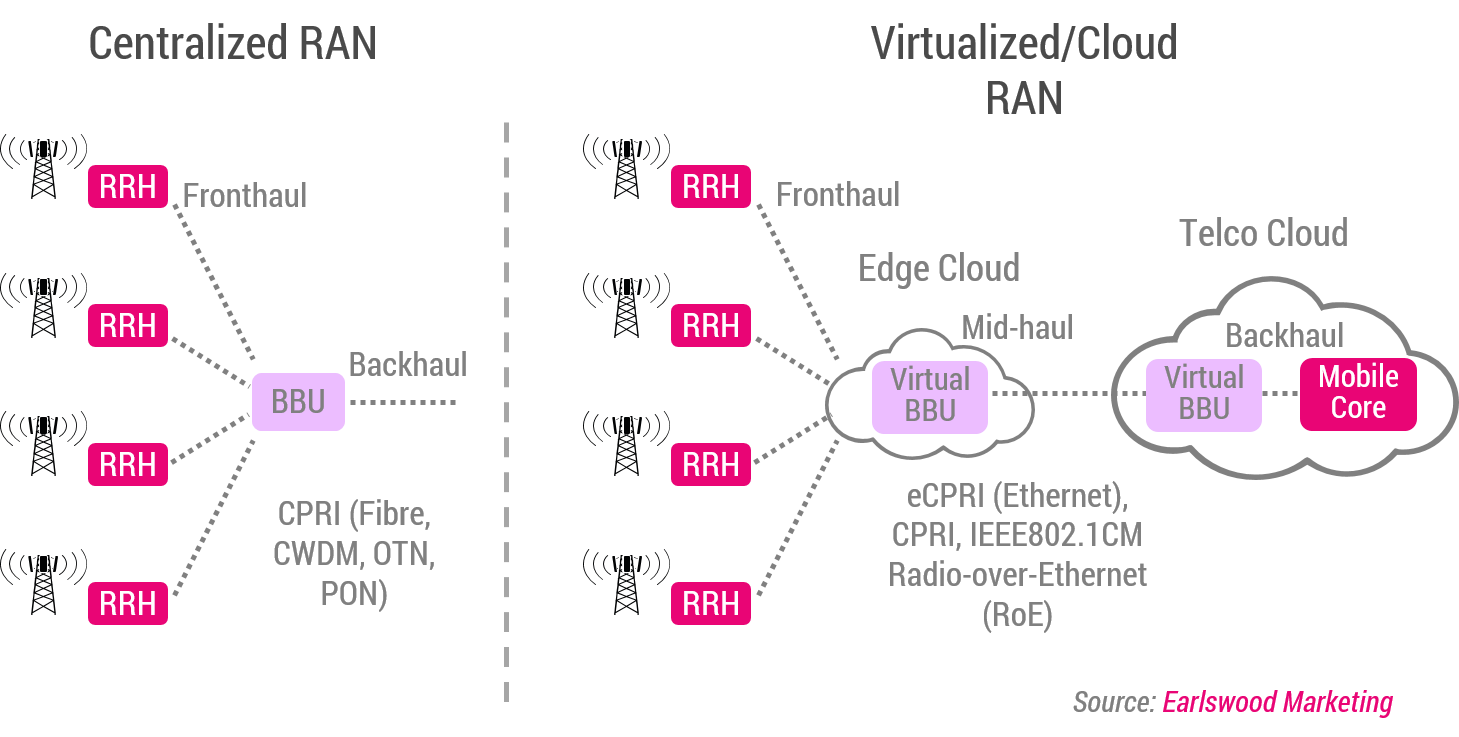Opening Up 5G RAN Development
Behind the headline grabbing transition from 4G to 5G wireless networks there is a significant shift in the radio access network (RAN) from a centralised architecture to a virtualized/cloud (vRAN) architecture. This shift in architecture enables the opening up of the RAN and associated infrastructure solutions, including xHaul networks and edge computing, through public and open specifications including Open RAN, eCPRI and multi-access edge computing (MEC). These developments are critical for the widespread deployment of 5G services.
In this blog I discuss vRAN architecture developments and highlight the key challenges for service providers. Future blogs in this series will cover the transition to 5G, the implementation options available for 4G/5G RANs and xHaul, and Open RAN developments.
There are three broad market drivers behind the expected shift to 5G wireless networks; mobile broadband, low latency connections and IoT. These all have an impact on RAN development. Mobile broadband was first promised for 3G wireless networks but only reliably delivered by 4G networks using LTE. Subscribers are now consuming huge quantities of content on their mobile devices, including social media and particularly video, and this is generating demand for higher speed connections and greater bandwidth in the RAN. Enhanced mobile broadband (eMBB) will enable these higher speed connections and the use of 5G New Radio (NR), which delivers higher spectral efficiency than LTE, should enable significantly lower cost per gigabyte for carriers as this technology matures.
Connected vehicles, augmented and virtual reality, cloud gaming and smart manufacturing, are some of the applications that require the low latency connectivity enabled by 5G NR Ultra-Reliable Low Latency Communications (uRLLC). The RAN xHaul network and application servers also need to deliver low latency for subscribers to fully benefit from these new services. Massive Machine-Type Communications (mMTC) is optimised for IoT applications and will be key in supporting the huge number of connected devices with different bandwidth and quality of service requirements.
A key challenge for service providers is ensuring the coverage needed to reach all these IoT devices and delivering the low latency and high bandwidth services required for other devices. The initial priority for service providers has to be the high profile eMBB services but the RAN needs to be built to support uRLLC and mMTC as well.
2G and 3G wireless networks were primarily delivered using macro base stations covering a relatively large area. These macro base stations are closely coupled to local radio heads. Scaling these networks has proved expensive requiring additional macro base stations or small base stations that replicate much of the functionality. The use of a centralized RAN architecture shown in the left diagram above makes scaling the RAN much easier. With a centralized RAN architecture, a single baseband unit (BBU) can support multiple remote radio heads (RRHs). The RRHs are connected to the BBU using a fronthaul network that carry radio data using CPRI (Common Public Radio Interface). The BBU is connected to the rest of the network over a packet based backhaul link. Although CPRI is a public specification this centralized RAN architecture is usually a closed solution provided by a single supplier.
The virtualized/cloud RAN architecture shown on the right above is a significant step forward towards virtualized and open wireless network infrastructures. eCPRI removes the need for a direct connection between the RRH and BBU and enables efficient and flexible radio data transmission via a packet based fronthaul transport network such as Ethernet. The eCPRI specification supports 5G and enables a functional split inside the physical Layer of the base station allowing a virtual BBU implementation. Virtual elements of the BBU can be hosted at the RRH, within an edge cloud location or within the telco cloud. The key challenges for both service providers and vendors are ensuring the different elements work effectively together and that the RAN scales to meet diverse deployment realities.
With a virtualized/cloud RAN architecture the bandwidths required for the fronthaul, backhaul and mid-haul connections depend heavily on where the different elements of the BBU are located. These packet-based connections can be fiber or wireless links including IEEE802.1CM Radio-Over-Ethernet (RoE). The bandwidths for 4G fronthaul links is typically below 1Gbit/s but for 5G, with some virtual BBU splits, could be several hundred Gbit/s.
This shift to a virtualized/cloud RAN architecture creates a much more open and flexible RAN. Carriers can choose best in class solutions for the different parts of the RAN. Edge servers provisioned for virtualized BBUs can also be used to run applications within the edge cloud and RAN to reduce latency. RRHs and virtual BBUs can be located to optimise coverage, maximise performance and deliver the best return on investment. The combination of 5G NR and a virtualized/cloud RAN architecture will not only deliver high bandwidth mobile broadband but will also open up new opportunities for low latency and IoT services.





